Track by Track: Zander Zon Talks “Saturn Return”
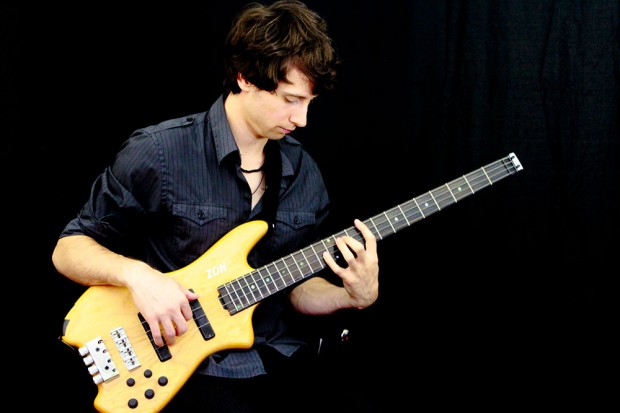
If you’ve been reading No Treble for a while now, or simply spend time on Youtube like we do finding the great bass players there, you’ve no doubt run across the music of Zander Zon.
Zander is a remarkable solo bassist, incorporating piccolo strings, alternate tunings and effects with unique compositions and arrangements. And while his technical ability is undeniable, his musicianship comes through loud and clear. In our interview with Zander, he shared his unique approach to the bass.
“My focus as a musician is to create unaccompanied compositions and arrangements for solo bass performance,” he said. “I use piccolo strings, which are very light gauge (020 – 052) with a huge pitch range, and how I tune my bass depends on the piece of music I’m playing. I do this because different altered tunings each have their own unique possibilities when it comes to chord voicings and harmonics.”
Zander released his second album this week, Saturn Return (iTunes and Amazon MP3). The 10-track release offers up six new solo bass compositions, three orchestrations and an arrangement of Pachelbel’s Baroque classic, “Canon in D”.
We reached out to Zander to get his insider’s view on the new album, in our first-ever track-by-track feature on No Treble. Each track is detailed by Zander in this exclusive, with audio clips for each song.
Introducing Saturn Return
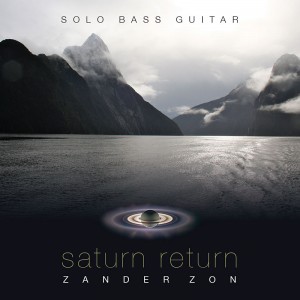 The title Saturn Return refers to the times in a person’s life when Saturn returns to the same place in its orbit that it was at when the person was born, which occurs about every 29 years. Some people believe it also represents a time of important change when critical choices present themselves. This is actually exactly what I was going through during this time in my life, as I was experiencing significant changes and transitions – personally, professionally and also musically. So this idea of a Saturn Return very much resonated with me. Additionally, the title also seemed to fit in with this album’s pieces, as the initial compositional ideas I was working on really changed and evolved over time. (I’ve mainly been composing these pieces since early 2012, but some of them have been in the works for around five years.)
The title Saturn Return refers to the times in a person’s life when Saturn returns to the same place in its orbit that it was at when the person was born, which occurs about every 29 years. Some people believe it also represents a time of important change when critical choices present themselves. This is actually exactly what I was going through during this time in my life, as I was experiencing significant changes and transitions – personally, professionally and also musically. So this idea of a Saturn Return very much resonated with me. Additionally, the title also seemed to fit in with this album’s pieces, as the initial compositional ideas I was working on really changed and evolved over time. (I’ve mainly been composing these pieces since early 2012, but some of them have been in the works for around five years.)
The recording process
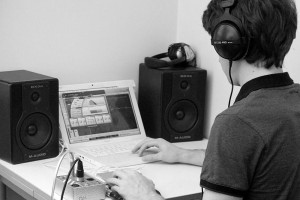 The recording process began in September 2012 and ended in December 2012. Everything was recorded in my “music room” at my flat in outer London. I wouldn’t dare call it a studio, as it isn’t close to being that; it’s simply a room in my flat that is dedicated to music! It has all my instruments, gear, equipment and my girlfriend’s instruments too, all in this tiny, little room. (There’s A LOT of piles…) For recording, I went through a SmartResearch DI box into my Apogee Duet into Logic – a very simple setup, which is what I like. All of the tunes feature my Zon Guitars VB4 bass, which has this amazing balance of clarity and presence; Joe Zon makes absolutely phenomenal instruments and I feel very lucky to have one. The cello I used was an NS Design electric cello and the piano was a Roland FP-7.
The recording process began in September 2012 and ended in December 2012. Everything was recorded in my “music room” at my flat in outer London. I wouldn’t dare call it a studio, as it isn’t close to being that; it’s simply a room in my flat that is dedicated to music! It has all my instruments, gear, equipment and my girlfriend’s instruments too, all in this tiny, little room. (There’s A LOT of piles…) For recording, I went through a SmartResearch DI box into my Apogee Duet into Logic – a very simple setup, which is what I like. All of the tunes feature my Zon Guitars VB4 bass, which has this amazing balance of clarity and presence; Joe Zon makes absolutely phenomenal instruments and I feel very lucky to have one. The cello I used was an NS Design electric cello and the piano was a Roland FP-7.
The Music
Saturn Return Gear:
| Zon Guitars VB4 with D’Addario Piccolo Strings 052 – 020 |
| NS Design Electric Cello |
| Roland FP-7 Electric Piano |
| Boss GT10 Effects Pedal |
| Logic |
| Apogee Duet |
| SmartResearch DI Box |
Saturn Return Tunings:
| October Starlight: G, D, B, D |
| Chimes: C, A, C, E |
| A Whisper in Time: D, G, C, F |
| Heartbeat Lyrics: B, E, A, D |
| Elements: E, A, C, E |
| Oracles of Her: A, D, G, C |
| Canon in D: B, E, A, D |
| Kinetic: D?, G?, B, E |
| Music Box: B?, E?, A?, D? |
| Constellation: C, F, B?, E? |
One of the main goals for the album was to explore different timbres and textures whilst keeping the focus on melody. When I compose, most of my energy goes into trying to create melodies that hopefully have an emotional impact on the listener. I’m one of those people that’s really drawn to the melody and I really want the melodies I create to be ones that people want to come back to, ones that they too are drawn to and ones that evoke emotion.
When it comes to solo bass, I feel the key is for each piece to have its own unique ‘feel’, which is a challenge and one that I think needs to be embraced if this type of album is going to be attempted. What I’m sure many people have noticed with pop songs or music with lyrics, is that there can be quite similar melodies between two songs, but because of differing lyrics and/or different instruments or production techniques, it’s harder to notice these similarities. However, with instrumental music, and more particularly, with solo bass, it’s a much more revealed, much more exposed sound – especially since I’m only using one type of bass. So, each piece having an individuality about it, and being able to tell its own little story, is really important.
By using various techniques, textures, altered tunings and aiming to express and evoke different emotions, I hope I was able to achieve individuality for each piece on Saturn Return.
Track 1: October Starlight
The tuning on “October Starlight” is G, D, B, D (low to high). I think this tuning helps demonstrate the capabilities of piccolo strings. I’m really hesitant to say I play “piccolo bass”, because I think for many people that implies a tuning of E, A, D, G – a full octave above standard tuning. I know there are bassists who use piccolo strings specifically for this particular tuning, which is great, but I think the best feature of these strings is that they offer a myriad of tuning possibilities.
For example, with “October Starlight”, my lowest open string is able to be tuned to the lowest G in standard tuning and my second lowest open string is tuned to the lowest D in standard tuning. These strings’ range is even more noticeable if you listen to Michael Manring peform “Helios”, an amazing tune from his most recent solo CD (Soliloquy). There is this incredible low-end, which is actually a piccolo string tuned to the lowest F in standard tuning. Because there’s less tension and the string is quite loose, it has this brilliant “bassness” to it and really growls. Ultimately, in my opinion, piccolo strings shouldn’t imply high pitch. Instead, I think piccolo strings should simply imply one thing: Range. What people do with that range is of course up to them!
Mainly, the tunings I use tend to stay somewhere around the region of B, E, A, D. Victor Wooten uses a similar tuning for his “tenor bass”, but tuned a whole step lower – A, D, G, C. His interpretation of “Norwegian Wood”, with this A to C altered tuning, is still one of my favorite solo bass arrangements.
With “October Starlight”, there are several different techniques I used to try to create different texture and fullness. I begin and end the piece with fretting hand pull-offs on my top two open strings, which come in various four-note sequences. With my plucking hand, I am playing some different combinations of low notes, some by slapping, some plucking, some tapping. I think this section really adds a sense of movement to the piece and brings the composition together in the end.
On a single chord during the chorus of the piece (starting at 1:09), I’m also using an interesting plucking technique that Matthew Garrison pioneered. It basically consists of four-finger plucking (thumb, index, middle, then ring) on one string, though for the sequence I’m referring to, I’m doing triplets on each string, while holding down one chord with my fretting hand. It’s sort of this wave motion with my plucking hand, getting higher in pitch as I move up to my highest string, and then coming back down again. Surrounding this arpeggio, I’m using chordal fingerstyle, harmonics and tapped harmonics to create the melody.
Track 2: Chimes
Apart from Michael Manring and Victor Wooten, my main influences come from fingerstyle guitarists, such as Erik Mongrain and Andy McKee. These guys have a cool percussive technique that involves using your thumb to come down on a string without producing a note, but instead producing a percussive sound. This technique is quite prominent on “Chimes” and a couple other pieces on the album. I think it adds a different type of timbre and some extra depth to the tune. Michael Manring uses a similar technique on his composition, “Excuse Me, Mr. Manring”.
The tuning I’m using for “Chimes” is C, A, C, E – a tuning that is very receptive to natural harmonics. I was able to come up with a couple of different melodies that mainly involve the use of harmonics, like the section from 0:16 and also a bridge from 2:46. Out of all the tunes on Saturn Return, this bridge is one of the melodies I’m most happy with. I wish I could have used it more often in the piece, but it just seemed to have its place as this smaller section near the end. There’s also some more aggressive tapped harmonics and strumming that take place before this section, which I thought lead into the bridge pretty well.
Track 3: A Whisper in Time
The cello was my first instrument. I took lessons from when I was 7, which I enjoyed more in elementary school than in high school: as a teenager, the cello is perhaps not the coolest instrument – at least not as cool as playing in a rock band! I was also made to practice the cello for 45 minutes every day; I was a bit resentful towards my parents at the time, but of course I’m grateful for that upbringing now. I switched over to bass when I was 17 and only recently have gotten back into the cello. I’ve really enjoyed it and love how my electric cello sounds like a mix between fretless bass and cello – sort of like a hybrid. And because it’s electric, I think it works well with my bass. Because of this nice union, I focused on trading melody lines between the two instruments for this piece.
The main theme in this piece (beginning at 0:40) came from an improvised cello solo that I happened to be recording. I always spend more time listening to potential compositions, and thinking about how to improve them, rather than the actual playing, and in this instance, I decided to scrap the entire solo section and just use this main theme. I thought it worked pretty well with the chords I was using and it became the chorus section in this piece. Just like the backing chords that are present throughout the entire tune, I’m plucking the cello to create the first two choruses – quite high up on the neck actually, which made it especially tricky for intonation! For the final chorus on this piece (from 3:01), I change from playing this main theme on cello to playing it on bass, whilst also layering some harmonics and quicker plucking to create what’s hopefully a nice end to the piece.
Track 4: Heartbeat Lyrics
The title of this piece is derived from the beat that’s present throughout a lot of the piece, and from the fact that you of course don’t need music to have words in order to express meaning and evoke emotion; the ideas within all my compositions serve as my lyrics and I wanted to represent this.
I thought a sort of jazzy intro for this piece might work well leading into the more upbeat tapping sections, so I figured a chorus effect would lend itself to this, whilst also creating a soft feel for the intro.
For the majority of this piece, I’m using two-handed tapping. For the main theme (beginning at 0:50), I’m tapping mainly in octaves with each hand playing a different pair of octaves (with my right hand, I’m tapping the octaves higher up on the neck using my index and middle fingers). The tuning is in fourths (B, E, A, D) to allow for this octave tapping. Using a four string bass to play solo, I’m always trying to utilize as many strings as possible to get as much fullness as possible – so two pairs of octaves seemed like a nice way of getting a fuller sound and creating a different type of texture.
Track 5: Elements
The title of this piece aims to represent the contrasting sections in this piece. I feel this is one of the most dynamic pieces on the album – there’s some really gentle, melodic bits; some slow, dissonant sections; some tense, percussive sections; and then a more vigorous, energetic ending.
One technique that I’ve been working on a lot recently has been my strumming. Victor Wooten’s double thumb technique involves him achieving four notes in two motions of his hand. His hand goes down and his thumb strikes a note; then when is hand comes up, his thumb strikes a note again and he plucks twice with his index finger and middle finger. Flamenco guitarists use a slightly similar strumming technique, also achieving four strums for every two motions of the hand. When their hand goes down, they use their index fingernail to strum a chord before their thumb strums the chord. On the way up, their thumbnail strums the chord then their index finger strums the chord. So four strums can be achieved with only the two motions. I’ve really enjoyed learning this technique because it sounds pretty awesome when you get it right! It’s actually not that difficult to figure out – I think it’s much easier than Victor’s technique or the Garrison four-finger technique because you probably wouldn’t ever practice it on one string, so it doesn’t need to be as precise. You can hear this technique during the final section of Elements (from 3:07), as well as on a couple of other pieces when I wanted to utilise some quick chord strums.
Track 6: Oracles of Her
When I first began playing bass, I started out in a punk rock band with my friends. I then began learning how to play bass by putting on a rock CD, figuring out the chord progression, then jamming along. Eventually, I heard Jaco and Victor Wooten and started trying to make up my own solo jams. Because of my classical background, I then began trying to play cello compositions – like Bach’s cello suites – on my acoustic bass guitar. After I moved to England, I heard Michael Manring on the Bass Day ’98 video. This completely changed how I viewed the instrument: what Manring was doing with the bass was extraordinary, and extremely emotive.
With “Oracles of Her”, it was cool to start rocking out a bit again. Originally, this piece was a bit bluesy and the chords were played on an acoustic guitar. This didn’t quite work because I just couldn’t get the exact sound I was after, so it eventually evolved into a piece that utilized various distortions, echoes and choruses. A lot of these effects came from the pedal board I use – a Boss GT10.
It was also really fun to play more “regular” bass lines in this piece, which I do for the chorus by palm muting the bassline to create a contrasting tone. I’m tuned A, D, G, C for this piece, so it’s the same tenor bass tuning I was talking about earlier that Victor Wooten utilizes. I really like this tuning because it’s in fourths, so common patterns apply; also, you’re only missing out on five low bass notes from standard tuning, so you can get quite low while still being able to create some higher melodies for added balance.
Track 7: Canon in D
Since I began arranging for solo bass, “Canon in D” is one of several classical pieces that I’ve worked on. I’ve also done a rendition of Tchaikovsky’s “Swan Lake” and Bach’s famous 1st cello suite “Prelude”. Ultimately, no matter what type of music I play, I think classical music’s influence on me will always be apparent.
For anyone who knows a lot about Baroque music, or is a cello player, they’ll know that the cello line in “Canon in D” is quite possibly the most boring line ever written for the instrument! It’s basically the same sequence of notes repeated over and over. However, this piece of music is of course legendary. It’s one of the most recognizable classical pieces ever written, and is certainly, in my opinion, one of the most beautiful. I originally came up with this arrangement a while ago, and you can find the video on YouTube. I wanted to do a “cover” for Saturn Return, and I thought Canon in D (tuned B, E, A, D) fitted in nicely. I know a lot of people love the original piece, so I do hope I did it justice! For the outro on this piece, I’m using a four-finger tremelo technique that I used a couple times on my last album; it’s derived from a combination of Matthew Garrison’s four-finger technique and the standard tremelo that Flamenco guitar players use.
Track 8: Kinetic
The ideas behind this piece were energy, motion and dynamics, hence the title. I’m using the thumb percussive technique I mentioned earlier, as well as tapping and fingerstyle. The section I’m most happy with is the middle section that begins at 1:46; it involves lots of arpeggios and makes use of my highest open string (tuned to E) as well as natural harmonics. I think this section fits the piece pretty well and adds variety to the composition, especially since there are quicker sections that surround it.
Track 9: Music Box
“Music Box” is another piece that evolved over time, starting out on guitar and bass and changing to piano and bass. Ultimately, I just think piano added that smoothness I was looking for with a piece like this. This time around, my bass is tuned a half-step higher than tenor bass tuning – Bb, Eb, Ab, Db.
When I think of a music box, I imagine a simple, playful melody, that at the same time has a sadness to it, maybe even asking the listener to reflect or reminisce. For this piece, I was trying to come up with a melody just like this – one that you’d hear once you opened a music box. This is what the initial melody of “Music Box” represents.
This piece took a long time to finish and was probably the hardest piece to record on the album. The composition just kept growing and I kept finding room to include additional bass parts (which I hope was a good thing!).
Track 10: Constellation
I always wanted this piece to end the album. It just felt like that type of piece. It felt like the end of the journey. The album represents my Saturn Return. It’s about a time period in my life and everything that came along with it. This piece seemed to symbolize the end of that journey. I think it has a type of finality to it, due partly to melodies that I tried to make melancholy and hopeful at the same time. It seemed like a fitting end.
Saturn Return is out now in digital formats (iTunes and Amazon MP3).
For more on Zander, check out zanderzon.com.

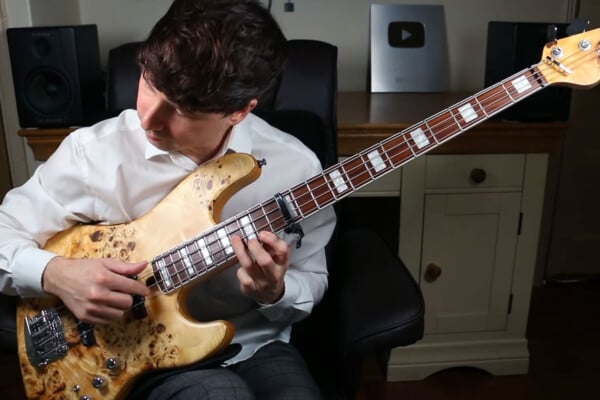
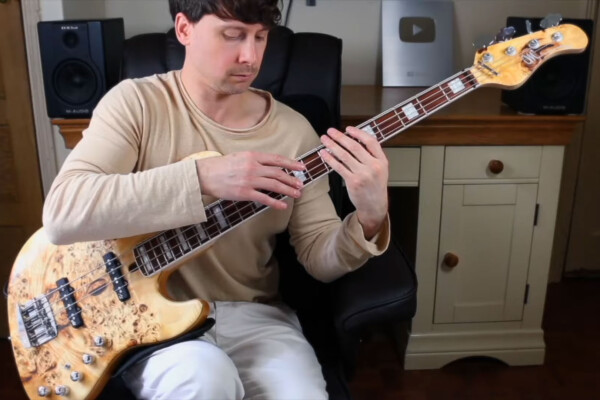
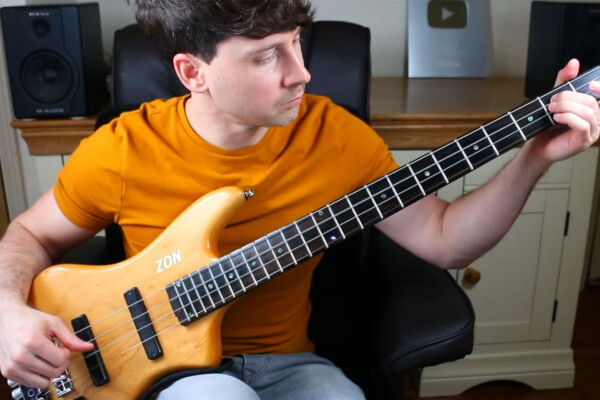
so openly honest and educating, will be following your work. best regards in the future.
Great work!
great!
Thanks, guys!
This guy is pretty amazing…
where can I buy your album from France?